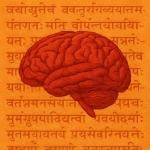
Atheists come in all shapes and sizes. The only thing conforming about being an atheist really is the lack of conformity with any established belief system. Through the ages, and in every age, there are people who don’t believe in supernatural beings or gods. This dis-belief system may sometimes be a response to the prevalent religious dogma of the time, like, for instance, a belief in modern times that there is a bearded gentleman out there in the skies somewhere who is helping football players score goals, picking sides in wars between countries, and willing to be bribed by countless teenagers to help them pass examinations that they haven’t prepared for. Other times, it may just be an affirmation that no second-hand experience is valid, and all beliefs must be arrived at through personal experience and scrutiny. This is a very high bar indeed, but we won’t get into that here.
Yoga, not just the modern athletic variety, has come up through the ages, like filtered artisanal water comes through the ground. It has been through many systems of belief, dis-belief and unbelief. What stands before us is a methodology that could only have passed the skeptic and believer’s test alike. It denies expression in favor of experience. All expression takes the form of logical constructs and may even use words. In the beginning, says the Bible, was the Word, and the Word was God. Using a language full of words is not a way to convey an experience, because the experience must be limited into the narrow definitions of a “word” before it can be passed along — this is the challenge with any language, because the transfer of any idea requires that both parties agree on the precise meaning of the idea before it can be transferred. Nothing new can be sent from one person to another if it can only be conveyed in words. Experience and Expression are two separate things.
The expression of Yoga can be in the language of Samkhya or Tantra. Naturally, these too are just words and ideas. But the system of Yoga (and the broader “dharmic” tradition) actually denies that these words have any deeper significance other than that the unfortunate speaker was forced to used words because there was no other way to transfer the experience. Instead, Yoga is the ultimate Do-It-Yourself system, where the ultimate truth (or even Ultimate Truth) can be fully experienced by anyone who is able to follow the instructions. In fact, Yoga claims that truly there is no other way to attain the pure experience. It cannot be read about, just as reading about water doesn’t quench our thirst. It cannot merely be an object of faith alone. Oh! Did I use the F-word here? OK, let’s discuss the F word now. Faith.
Do teachers of Yoga advocate a set of beliefs? Many do. They may, for instance, state that the ultimate reality is non-dual. Some may state that the ultimate reality is that there is God alone. Some others have stated that creativity and matter exist as separate states, and when they intermingle, the Big Bang occurs. These are indeed tall claims, and each will look at casual glance to be exactly the sort of thing an organized religion might foist upon their sheep. Appearances are deceptive.
The starter belief in Yoga is generally a claim made by someone who also claims that they have experienced the reality as it is, and this is what they have found. They offer no proof, because really there cannot be an expressed proof for an experience. The only proof of the pudding is in the eating. All that the speakers have said is that “Assume there is a pudding, and I can assure you it tastes like one, so now go ahead and bite into it and find out for yourself”. This pudding is only an article of faith until the student has tasted it herself. Then, there’s no “pudding”, but just the experience of one.
A frequently used example in Yoga is that a set of beliefs is like a ladder. You can use it to climb to the roof, but if you cling to the ladder, you will not get to the roof. Conversely, when you get to the roof, you can kick the ladder away because you don’t need it anymore. Faith is a tool in this DIY tradition. Once you have used it, you can throw it away.
An atheist is not immoral. She just believes that no external, supernatural authority has created a set of rules for us to follow. Yes, as humans, we come wired with the rules that evolution has left us with. Staying clean, mostly pair bonding, caring for the young, sticking to our family and our people, taking care of the needy, and when times call for it, to offer service over self. These don’t need a moral code book — in fact we follow these instinctively because that’s who we are as humans.
Patanjali’s eight-step path also lays out Yamas and Niyamas as the starter set of personal and interpersonal disciplines. These are the same set of rules that we just surveyed — common sense rules that articulate what we as humans have found to be a useful set of rules to organize ourselves personally and collectively. These are not carved into stone or written into parchment. These are written into our DNA as a social primate that has learned to temper his rage and being altruistic to his species.
Yoga and atheism have no argument amongst them. An atheist could be a Yogi just as well as a religious person (of any religion) can be a Yogi.














